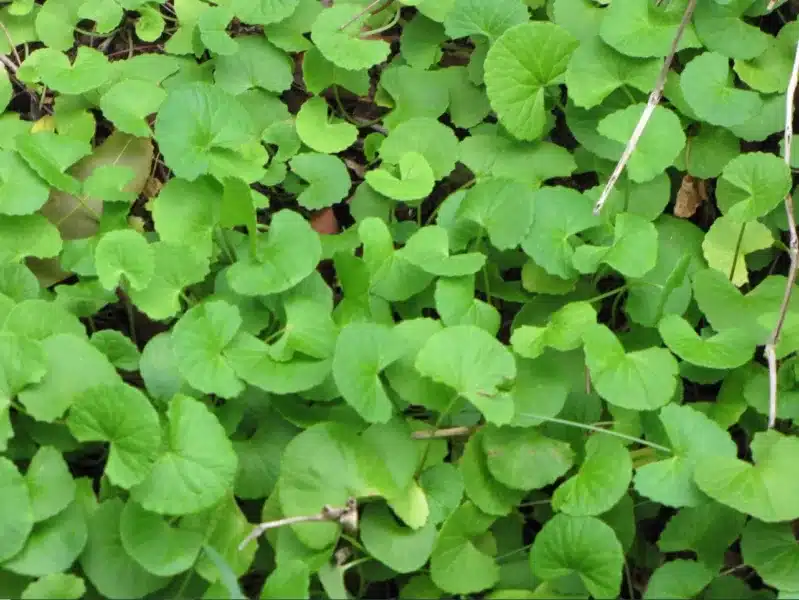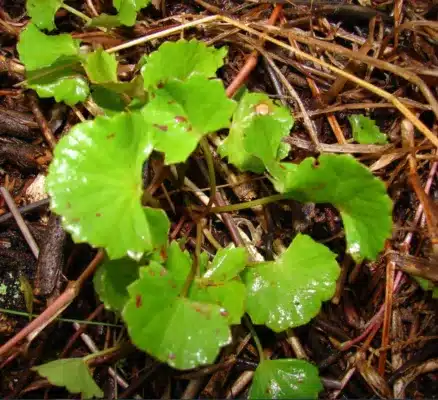Indian Pennyworth Leaves Unlocking the Health\Wellness Benefits of Vallarai (Gotu Kola): A Deep Dive into the Centuries-Old Herb
Scientific Name: Centella Asiatica, Tamil Name: Vallarai, Malayalam Name: Kodangal, Muyalchevi and Hindi Name: Brahma Manduki
Origin and Background
Indian pennywort or Gotu Kola is native to the wetlands of Asia, particularly the Indian subcontinent, Southeast Asia, and parts of China. It has also been found in Southeast Asia, parts of Australia, and wetland regions of the Southeastern United States. It has a long history of use in traditional Asian medicine, dating back thousands of years. In India, it is known as “Brahmi” or “Mandukaparni” and has been a vital herb in Ayurvedic medicine, one of the world’s oldest holistic healing systems. It is believed to be mentioned in ancient Ayurvedic texts for its medicinal properties. The Ramayana, the Mahabharata, and other classic works of Indian literature describe the benefits of this herb
In traditional Chinese medicine, it is called “Luo Le” and has also been used for its health benefits.
These are small, creeping plant with round leaves, and it thrives in damp, marshy areas. Its appearance is often likened to a coin, which is why it’s named “pennywort.”
Indian Pennyworth Leaves , let us unlock the Health\Wellness Benefits of Vallarai (Gotu Kola) and take a Deep Dive into the Centuries-Old Herb.

Nutrients
Indian Pennywort or Vallarai (Centella Asiatica) is a herb that contains a variety of nutrients and bioactive compounds that contribute to its potential health benefits. Here are some of the key nutrients and compounds found in it:
Triterpenoids: It is rich in triterpenoid compounds, including asiaticoside, asiatic acid, and madecassic acid. These compounds are believed to have anti-inflammatory and wound-healing properties.
Flavonoids: Flavonoids are antioxidant compounds found in Indian pennywort that help protect cells from oxidative stress and reduce inflammation.
Phytosterols: Phytosterols are plant compounds that can help lower cholesterol levels and support heart health.
Vitamins: It contains essential vitamins, including vitamin C, vitamin A, and various B vitamins. Vitamin C is an antioxidant, while vitamin A is essential for skin health and vision.
Minerals: It provides minerals such as calcium, potassium, and magnesium, which are vital for various bodily functions, including bone health and muscle function.
Tannins: Tannins are a type of polyphenol found in Indian Pennywort or Gotu Kola, known for their antioxidant and astringent properties.
Saponins: Saponins are naturally occurring compounds in leaves that may have anti-inflammatory and immune-boosting effects.
Essential Oils: The herb also contains essential oils, which can have aromatic and potential therapeutic properties.
Amino Acids: It also contains various amino acids, including alanine, serine, and tyrosine, which are the building blocks of proteins and play various roles in the body.
Fatty Acids: It contains essential fatty acids, which are important for maintaining healthy cell membranes and supporting various physiological functions.
These nutrients and bioactive compounds contribute to the herb’s potential health benefits, which include supporting cognitive function, improving skin health, reducing inflammation, and aiding in wound healing. It is often used in traditional and alternative medicine systems for these purposes, and it’s available in various forms, such as supplements, teas, and topical creams. However, it’s important to use Indian Pennywort or Brahma Manduki, or Gotu Kola under the guidance of a healthcare professional, as individual responses to herbal remedies can vary.
My suggestion is to cook the leaves with or without lentils, and you will enjoy it.
Benefits
Indian pennywort (Centella asiatica) is known for its potential health benefits, which are attributed to its rich nutrient profile and bioactive compounds. Here are some of the notable benefits associated with leaves:
Improved Cognitive Function: Indian pennywort has been traditionally used to enhance memory and cognitive function. Some studies suggest that the compounds in may have a positive impact on brain health and cognitive abilities.
Wound Healing: It is often used topically to aid in wound healing. It is believed to stimulate the production of collagen, a key component in skin regeneration, and reduce the appearance of scars.
Anti-Inflammatory Effects: Indian pennywort has triterpenoid compounds, such as asiaticoside and Asiatic acid, which are thought to have anti-inflammatory properties. This makes it potentially beneficial for conditions involving inflammation, like arthritis.
Skin Health: They are also used to promote healthy skin. It may help with conditions like psoriasis and eczema and is believed to improve skin elasticity and reduce the signs of aging.
Antioxidant Protection: Indian pennywort flavonoids and other antioxidants in the leaves help protect cells from oxidative stress, reducing the risk of chronic diseases.
Blood Circulation: Some studies suggest that Indian pennywort may improve blood circulation, which can be beneficial for conditions like venous insufficiency and varicose veins.
Stress and Anxiety Reduction: Indian pennywort has been used traditionally to reduce anxiety and stress.
Potential Cardiovascular Benefits: Some research suggests that Gotu Kola may support heart health by reducing cholesterol levels and improving blood vessel function.
Anti-Ulcer Properties: Indian pennywort may help protect the stomach lining and reduce the risk of ulcers.
Hair Health: Some people use Gotu Kola to promote hair growth and improve the health of their hair.
It’s important to note that while It has a long history of traditional use and is generally considered safe, it should be used under the guidance of a healthcare professional, especially when used for medicinal purposes. If you are using any Wellness, Ayurved Dosage and safety considerations may vary from person to person, and potential side effects or interactions with other medications should be carefully evaluated. Always consult with a healthcare provider before using Gotu Kola or any herbal remedy for specific health concerns. Again, it is always best to cook and eat the leaves along with lentils
Growing Gotu Kola at Home: Easy Steps for a Nutrient-Rich Aquatic Plant
Gotu Kola is an aquatic plant that thrives in water environments. It’s especially sensitive to biological and chemical pollutants in the water, which can be absorbed into the plant. The good news is that you can easily cultivate Gotu Kola at home. All you need is a container with no holes at the bottom. Fill it with mud, place small gravels on top, and plant the Gotu Kola about an inch deep. Fill it with water, and within 10 to 15 days, you’ll be amazed to see it start growing. Not only is it a fascinating plant to cultivate, but you can also enjoy its leaves in salads and various recipes.

